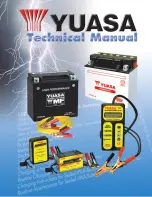
Electronic Stability Control (ESC)
This system enhances directional control and stability of
the vehicle under various driving conditions. ESC corrects
for oversteering or understeering of the vehicle by apply-
ing the brake of the appropriate wheel(s) to assist in
counteracting the oversteer or understeer condition. En-
gine power may also be reduced to help the vehicle
maintain the desired path.
ESC uses sensors in the vehicle to determine the vehicle
path intended by the driver and compares it to the actual
path of the vehicle. When the actual path does not match
the intended path, ESC applies the brake of the appropriate
wheel to assist in counteracting the oversteer or understeer
condition.
•
Oversteer - when the vehicle is turning more than
appropriate for the steering wheel position.
•
Understeer - when the vehicle is turning less than
appropriate for the steering wheel position.
The “ESC Activation/Malfunction Indicator Light” located
in the instrument cluster will start to flash as soon as the
ESC system becomes active. The “ESC Activation/
Malfunction Indicator Light” also flashes when the TCS is
active. If the “ESC Activation/Malfunction Indicator
Light” begins to flash during acceleration, ease up on the
accelerator and apply as little throttle as possible. Be sure to
adapt your speed and driving to the prevailing road
conditions.
WARNING!
•
Electronic Stability Control (ESC) cannot prevent the
natural laws of physics from acting on the vehicle,
nor can it increase the traction afforded by prevailing
road conditions. ESC cannot prevent accidents, in-
cluding those resulting from excessive speed in
turns, driving on very slippery surfaces, or hydro-
planing. ESC also cannot prevent accidents resulting
from loss of vehicle control due to inappropriate
driver input for the conditions. Only a safe, attentive,
and skillful driver can prevent accidents. The capa-
bilities of an ESC equipped vehicle must never be
exploited in a reckless or dangerous manner which
could jeopardize the user’s safety or the safety of
others.
•
Vehicle modifications, or failure to properly main-
tain your vehicle, may change the handling charac-
teristics of your vehicle, and may negatively affect
(Continued)
5
STARTING AND OPERATING
363
Summary of Contents for Chassis Cab 2017
Page 4: ......
Page 10: ......
Page 288: ...8 4 8 4 NAV With Manual Temperature Controls 286 UNDERSTANDING YOUR INSTRUMENT PANEL ...
Page 289: ...8 4 8 4 NAV With Automatic Temperature Controls 4 UNDERSTANDING YOUR INSTRUMENT PANEL 287 ...
Page 298: ...Operating Tips Chart 296 UNDERSTANDING YOUR INSTRUMENT PANEL ...
Page 305: ...Uconnect 5 0 Radio Uconnect 8 4 8 4 NAV Radio 4 UNDERSTANDING YOUR INSTRUMENT PANEL 303 ...
Page 307: ...Uconnect 5 0 Media Uconnect 8 4 8 4 NAV Media 4 UNDERSTANDING YOUR INSTRUMENT PANEL 305 ...
Page 452: ......
Page 513: ...MAINTENANCE SCHEDULES CONTENTS 䡵 MAINTENANCE SCHEDULE 512 Maintenance Chart 513 8 ...
Page 525: ...INDEX 10 ...
















































